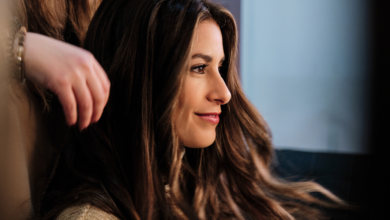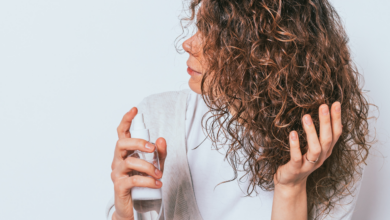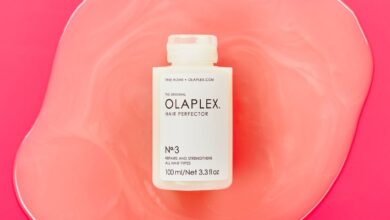
You’re in for a treat as we explore the fascinating world of healthy haircuts! Get ready to discover the science behind those stylish trims on stylish.ae. Whether you’re looking to maintain your luscious locks or switch up your hairstyle, this article has got you covered. From the importance of proper hair care to the latest techniques revolutionizing the industry, you’ll uncover the secrets to achieving that enviable, healthy hair. So sit back, relax, and prepare to be amazed by the science that goes into creating a cut above the rest.

The Importance of Healthy Haircuts
Maintaining healthy hair is an essential part of your overall appearance and self-confidence. A healthy haircut plays a crucial role in achieving and maintaining hair health. Not only does it keep your hair looking neat and stylish, but it also promotes hair growth and strengthens hair structure. Understanding the link between hair health and haircuts is the first step towards achieving luscious locks.
The Link Between Hair Health and Haircuts
Believe it or not, regular haircuts are essential for maintaining the health and vitality of your hair. When we say healthy haircuts, we mean more than just a trim to remove split ends. A healthy haircut involves techniques and practices that promote hair growth, improve hair texture, and prevent damage. Regular trims allow for the removal of damaged, brittle ends, which prevents further breakage and promotes the growth of stronger, healthier hair.

The Benefits of Regular Haircuts
Regular haircuts offer numerous benefits that extend beyond just the aesthetics. By getting your hair trimmed regularly, you can prevent the development of split ends, which often lead to hair breakage. Split ends not only make your hair look frizzy and unhealthy, but they can also hinder hair growth. By cutting off these damaged ends, you allow your hair to grow stronger and reduce the likelihood of breakage.
Additionally, regular haircuts help maintain the shape and style of your hair. If you have a layered or textured haircut, regular trims ensure that your hair maintains its desired shape and structure. This helps you avoid the frustration of growing out hair that has lost its original style and shape.
How Haircuts Affect Hair Growth
While haircuts do not directly affect the rate at which your hair grows, they play a crucial role in promoting healthy hair growth. By removing split ends and damaged hair, your hair is less likely to break off and can grow longer and stronger. Trimming the ends of your hair also prevents the split ends from traveling up the hair shaft, which can lead to additional damage and breakage.
Trimming your hair regularly also stimulates the circulation in your scalp, which can promote hair growth. A healthy scalp is essential for hair growth as it provides the necessary nutrients and oxygen to the hair follicles. By keeping your hair healthy and free from damage, you create the optimal conditions for hair growth.

Understanding Hair Structure
To truly appreciate the importance of healthy haircuts, it is crucial to understand the structure of hair. Hair is a complex structure made up of several layers and components, each playing a role in its overall health and appearance.
The Anatomy of Hair
Hair consists of three layers: the cuticle, cortex, and medulla. The outermost layer, the cuticle, is composed of overlapping scales that protect the inner layers of hair. The cuticle acts as a barrier, preventing damage and moisture loss.
Beneath the cuticle, lies the cortex, which is responsible for the strength and flexibility of hair. The cortex contains proteins, such as keratin, that give hair its structure. It also determines the color and texture of your hair.
The innermost layer of hair is known as the medulla, which is not present in all hair types. The medulla can vary in size and shape, and its exact function is still not fully understood.
The Hair Growth Cycle
Understanding the hair growth cycle is essential for maintaining healthy hair. Hair goes through three main phases: the anagen phase, the catagen phase, and the telogen phase.
During the anagen phase, also known as the growth phase, hair actively grows. This phase can last anywhere from two to five years, depending on individual factors.
The catagen phase, or the transition phase, is a short phase lasting only a few weeks. During this phase, the hair follicle detaches from the blood supply and ultimately results in the cessation of hair growth.
The telogen phase, or the resting phase, is the final phase of the hair growth cycle. The hair follicle becomes inactive during this phase and sheds the hair shaft. This phase can last for several weeks up to a few months before new hair begins to grow, and the cycle repeats.
The Impact of Haircuts on Hair Structure
Haircuts can have a significant impact on the overall structure of your hair. By removing split ends and damaged hair, haircuts help maintain the integrity of the hair shaft. Split ends can cause the hair to appear frizzy, dull, and dry. Regular trims prevent these split ends from traveling up the hair strand, minimizing the damage and maintaining healthy-looking hair.
Haircuts can also play a role in enhancing the shape and texture of your hair. By strategically removing certain areas or adding layers, haircuts can create movement and volume, giving your hair a more dynamic and stylish appearance.
By understanding the structure of your hair and its growth cycle, you can make more informed decisions about the type of haircut that will benefit your hair’s health and appearance.
The Science Behind Healthy Haircuts
Maintaining healthy hair goes beyond just trimming split ends. It requires proper haircare practices, considerations in haircut choice, and the use of suitable hair products. By understanding the science behind healthy haircuts, you can ensure that the techniques and products used promote optimal hair health.
The Role of Proper Haircare Practices
Proper haircare practices are vital for maintaining healthy hair. This includes regularly washing and conditioning your hair with suitable products. It is important to choose products that are free from harsh chemicals and sulfates, as they can strip the hair of its natural oils and cause dryness and damage.
Proper haircare practices also involve protecting your hair from excessive heat styling, such as using straighteners or curling irons. Heat damage can weaken the hair shaft and lead to breakage. Using heat protectant products and limiting the use of heated styling tools can help minimize damage.
Additionally, adopting a gentle approach to detangling and brushing your hair is crucial. Using wide-toothed combs and brushes with soft bristles can help prevent excessive pulling and breakage.
Factors to Consider in a Healthy Haircut
When choosing a healthy haircut, there are several factors to consider that can impact the overall health and appearance of your hair. One such factor is the length of your hair. Longer hair may require different maintenance techniques and products compared to shorter hair.
Another factor to consider is the type and texture of your hair. Fine hair may benefit from shorter, layered cuts that add volume and movement. On the other hand, thick, curly hair may benefit from longer cuts that help distribute the weight of the hair and prevent excessive frizz.
It is also important to consider the shape of your face when choosing a haircut. A flattering haircut that complements your facial features can enhance your overall appearance and boost your confidence.
The Influence of Hair Products
The hair products you use can significantly impact the health of your hair. It is important to choose products that are suitable for your hair type and address specific concerns you may have, such as dryness, frizz, or damage.
Choosing gentle, sulfate-free shampoos and conditioners can help prevent stripping the hair of its natural oils. Additionally, using leave-in conditioners, serums, and oils can provide added moisture and protection for your hair.
Avoiding products that contain harsh chemicals, such as alcohol-based styling products, can also help maintain the health of your hair. These products can dry out the hair and cause damage.
Being mindful of the ingredients in your hair products and choosing those that nourish and protect your hair can contribute to healthier, stronger hair.

The Right Techniques for Healthy Haircuts
Ensuring you receive a healthy haircut involves selecting the right haircut for your hair type, using proper sectioning and parting techniques, and taking steps to prevent heat damage. By following these techniques, you can achieve a haircut that not only looks great but also promotes optimal hair health.
Choosing the Right Haircut for Hair Type
Every hair type has specific needs and considerations, and choosing the right haircut is essential for maintaining healthy-looking hair. Fine hair may benefit from shorter, layered cuts that add volume and create a fuller appearance. On the other hand, thick or curly hair may require longer cuts that distribute the weight of the hair and minimize frizz.
It is crucial to communicate with your stylist about your hair type and desired outcome. A skilled stylist will be able to provide recommendations that suit your hair type and address any concerns you may have, such as thinning or lack of volume.
Proper Sectioning and Parting Techniques
Proper sectioning and parting techniques are essential for achieving a balanced and even haircut. By dividing your hair into sections, your stylist can ensure that each section is cut to the desired length and style. This helps create a cohesive and well-blended haircut.
Parting techniques, such as center parting, side parting, or asymmetrical parting, can also enhance the overall look of your haircut. Your stylist can guide you in choosing the most flattering parting technique that suits your face shape and desired style.
Styling Tools and Heat Damage Prevention
The use of styling tools, such as straighteners and curling irons, can cause significant damage to your hair if not used properly. To prevent heat damage, it is crucial to use these tools at the appropriate temperatures and to apply a heat protectant product before styling.
Additionally, limiting the frequency of heat styling and opting for heatless styling techniques, such as air-drying or using rollers, can help minimize damage. Embracing your natural hair texture and finding suitable products and techniques to enhance it can also contribute to healthier hair.
By incorporating these techniques into your haircut routine, you can achieve a healthy, stylish haircut that promotes optimal hair health.
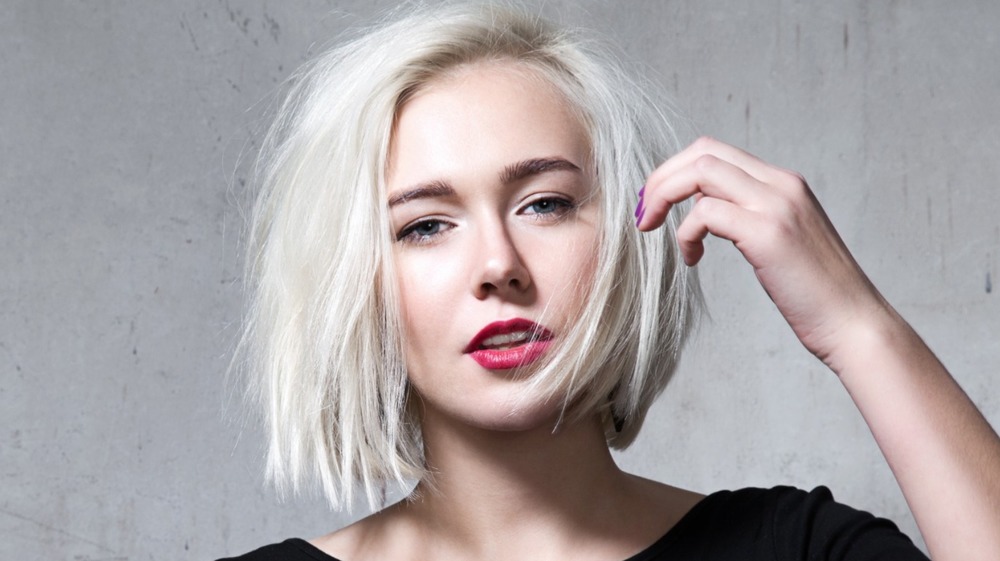
Stylist Tips for Maintaining Hair Health
Maintaining healthy hair goes beyond just getting regular haircuts. It requires a comprehensive approach that includes proper haircare products, minimizing breakage and split ends, and managing hair style and maintenance. Stylists have valuable tips and recommendations to help you maintain the health of your hair between salon visits.
Recommended Haircare Products
Stylists can provide valuable recommendations on suitable haircare products based on your hair type and concerns. From shampoo and conditioner to leave-in treatments and styling products, stylists can guide you in choosing products that promote hair health and address specific issues you may have, such as dryness, frizz, or damage.
Additionally, stylists can advise on the frequency of product usage and techniques for proper application. They can help you create a personalized haircare routine that suits your individual needs and promotes optimal hair health.
How to Minimize Breakage and Split Ends
Breakage and split ends can be a common concern for many individuals. Stylists can provide tips on how to minimize breakage and split ends, such as using wide-toothed combs or brushes with soft bristles for gentle detangling.
Regular trims are also crucial for preventing split ends from traveling up the hair shaft and causing further damage. Stylists can advise on the recommended frequency of trims based on your hair type and growth rate.
Additionally, stylists can recommend treatments, such as deep conditioning masks or protein treatments, to help strengthen the hair and minimize breakage.
Managing Hair Style and Maintenance
Maintaining the style and appearance of your haircut between salon visits requires proper maintenance techniques. Stylists can provide tips on how to style your hair at home, including the use of suitable styling products and tools.
They can also offer guidance on appropriate styling techniques for your specific haircut. This ensures that you can recreate the desired look and maintain the shape and structure of your haircut.
Stylists may also provide insight on how to protect your hair while engaging in physical activities or sleeping to prevent unnecessary damage.
By incorporating these stylist tips into your daily haircare routine, you can maintain the health and style of your haircut between salon visits.

Haircut Innovations for Optimal Hair Health
Advancements in haircutting technology and innovative techniques have revolutionized the way we approach haircuts. These innovations focus not only on creating stylish haircuts but also on promoting optimal hair health. By staying informed about these advancements, you can make more informed decisions when it comes to your own hair.
Advances in Haircutting Technology
Technology has transformed the way haircuts are performed, allowing for more precise and personalized results. One such advancement is the use of 3D scanning technology to create a digital replica of your head and hair. This technology enables stylists to visualize and plan haircuts more accurately, taking into account factors such as hair texture, growth patterns, and face shape.
Another technological innovation is the development of laser-guided hair cutting tools. These tools use lasers to ensure precise and even cuts, reducing the risk of human error. This technology is particularly helpful for achieving intricate or complex haircut styles.
Innovative Haircutting Techniques
Innovative haircutting techniques have emerged to cater to diverse hair types and styles. One such technique is dry cutting, which involves cutting hair without prior wetting. Dry cutting allows stylists to see the natural shape and movement of the hair, resulting in more tailored and personalized haircuts.
Precision cutting techniques, such as point cutting and texturizing, have also gained popularity. These techniques involve cutting individual strands of hair at different lengths or angles to create texture and movement.
Additionally, creative haircutting techniques, such as razor cutting or freehand cutting, allow stylists to create unique and artistic looks. These techniques can add personality and flair to your haircut, while still maintaining hair health.
Haircut Trends for Enhanced Hair Health
Haircut trends have not only focused on style but also on enhancing hair health. In recent years, the emphasis has shifted towards embracing natural textures and minimizing damage. Haircuts that incorporate less heat styling and require minimal maintenance have become popular, allowing individuals to achieve stylish looks without compromising the health of their hair.
Layered haircuts have also seen a resurgence in popularity, as they add volume and movement to the hair. By strategically removing certain areas, layered haircuts can create a lightweight and airy appearance.
When considering a trendy haircut, it is essential to communicate with your stylist about your hair health goals and preferences. They can guide you in choosing a trendy haircut that suits your individual needs and promotes the health of your hair.

The Role of Nutrition in Hair Health
While haircuts and proper haircare practices play a crucial role in maintaining healthy hair, nutrition also plays a significant part. The saying “you are what you eat” holds true when it comes to your hair. The nutrients and vitamins you consume can directly impact the growth and health of your hair.
Essential Nutrients for Healthy Hair
Certain nutrients are essential for promoting hair health. These include omega-3 fatty acids, biotin, vitamin E, iron, and protein. Omega-3 fatty acids, found in foods like salmon and flaxseeds, help nourish the hair follicles and prevent dryness and brittleness.
Biotin, also known as vitamin B7, is vital for hair growth and strength. Foods rich in biotin include eggs, nuts, and leafy greens.
Vitamin E is an antioxidant that helps protect the hair from damage caused by free radicals. You can find vitamin E in foods such as almonds, sunflower seeds, and avocados.
Iron is essential for proper oxygenation and nutrient delivery to the hair follicles. Foods rich in iron include lean meats, legumes, and spinach.
Protein is the building block of hair, and consuming adequate amounts of protein is crucial for maintaining strong, healthy hair. Sources of protein include lean meats, poultry, fish, and plant-based proteins such as beans and lentils.
How Diet Affects Hair Growth
Your diet can directly impact the growth and health of your hair. A balanced diet that includes a variety of nutrients promotes optimal hair growth. Consuming inadequate amounts of essential nutrients can lead to hair thinning, dryness, and dullness.
Additionally, crash diets or extreme dietary restrictions can result in nutrient deficiencies, which can negatively affect hair health. It is crucial to maintain a well-rounded, nutritious diet to support healthy hair growth and overall well-being.
Supplementing with Vitamins and Minerals
In some cases, dietary sources alone may not provide sufficient amounts of specific nutrients for optimal hair health. In these situations, supplements can be considered under the guidance of a healthcare professional.
Supplements such as biotin, vitamin E, and omega-3 fatty acids are available and can help support healthy hair growth. However, it is important to consult with a healthcare professional before starting any new supplement regimen to ensure proper dosage and compatibility with your individual health needs.
By incorporating a balanced diet and considering appropriate supplements, you can support the health and growth of your hair from within.

Debunking Haircut Myths and Misconceptions
There are numerous myths and misconceptions surrounding haircuts and their impact on hair health. It is essential to separate fact from fiction and understand the truth behind these common beliefs.
Does Frequent Haircutting Promote Hair Growth?
One common myth is that frequent haircuts promote hair growth. In reality, haircuts do not directly affect the rate at which your hair grows. Hair growth occurs at the follicle level, and cutting the hair shaft has no impact on the follicle’s ability to produce hair.
However, regular haircuts can indirectly contribute to hair growth by preventing breakage and maintaining the overall health of the hair. By removing split ends and damaged hair, haircuts prevent further breakage that can hinder hair growth.
Can Haircuts Repair Damaged Hair?
While haircuts can remove split ends and damaged hair, they do not repair the damage already done. Once the hair is damaged, it cannot be fully restored to its original state through haircuts alone.
Repairing damaged hair requires a comprehensive approach that includes proper haircare practices, the use of suitable hair products, and addressing underlying causes of damage. If you have severely damaged hair, consult with a professional stylist or haircare expert for advice on the best course of action.
Myth: Longer Hair Doesn’t Need Regular Trims
Many people believe that longer hair does not require regular trims. However, this is a myth. Regardless of hair length, regular trims are necessary to maintain hair health. Longer hair is more prone to split ends and breakage, and regular trims can help prevent these issues from occurring.
While the frequency of trims may vary depending on hair type and individual factors, it is important to communicate with your stylist about your hair health goals and determine an appropriate trim schedule.
By debunking these myths and misconceptions, you can make more informed decisions about your haircare routine and the role haircuts play in maintaining hair health.
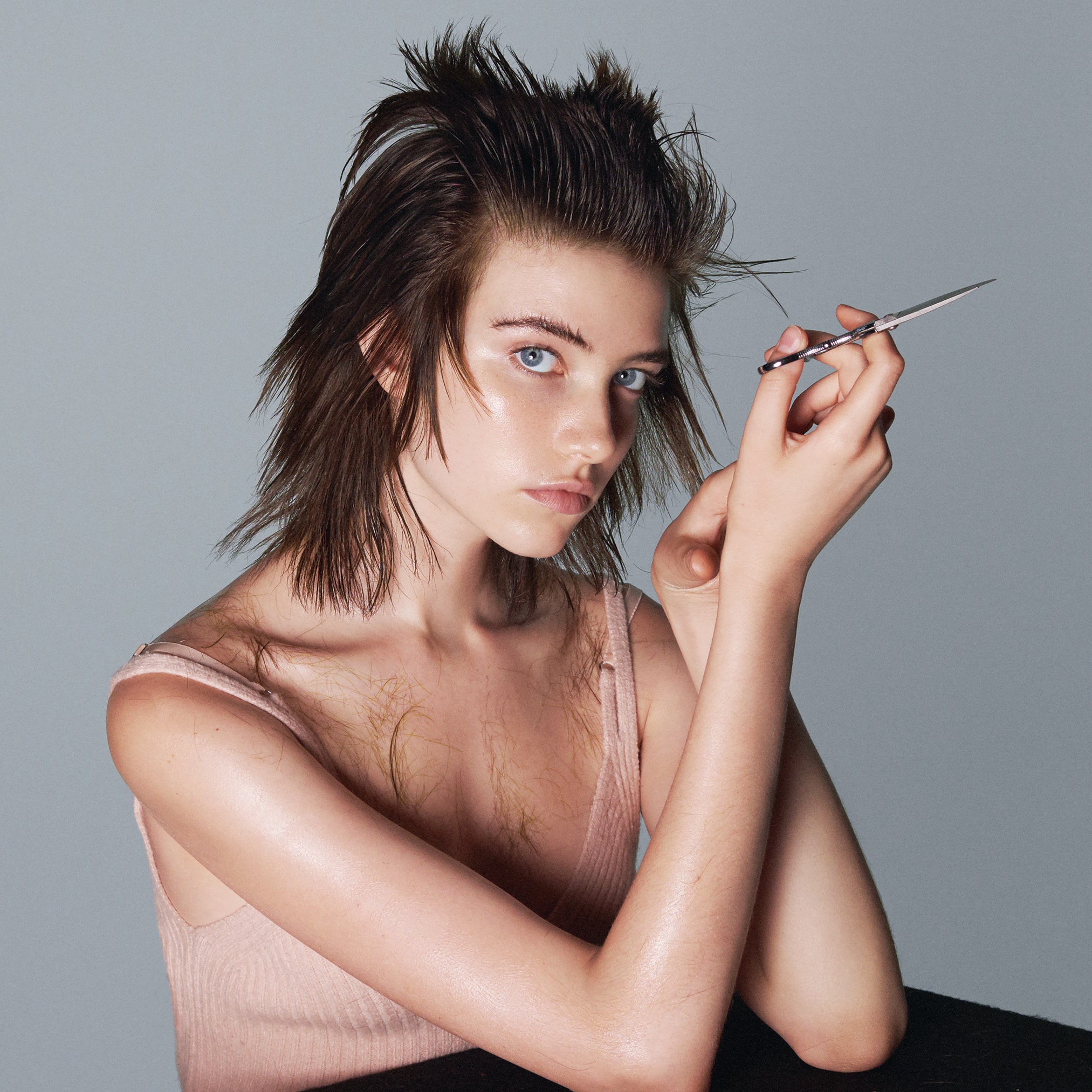
Salon vs. DIY Haircuts: Pros and Cons
Deciding between getting a haircut at a salon or attempting a DIY haircut can be a difficult choice. Each option has its own advantages and disadvantages, and factors such as personal preferences, skill level, and desired outcome should be considered.
Benefits of Professional Salon Haircuts
Getting a haircut at a professional salon offers several benefits. Firstly, professional stylists have the necessary skills and expertise to provide tailored haircuts that suit your individual needs and desired outcome. They can assess your hair type, texture, and face shape and recommend the best haircut to enhance your natural features.
Additionally, salon haircuts often include additional services, such as washing, conditioning, and styling, which can contribute to the overall health and appearance of your hair. Professional stylists can also provide valuable tips and recommendations for maintaining the health of your hair between salon visits.
Advantages of DIY Haircuts
DIY haircuts have their own advantages, particularly for individuals who prefer to have control over their own hair. DIY haircuts can be more cost-effective, as you save money on salon visits. You also have the freedom to experiment with different styles and techniques.
For individuals with simple haircut styles or those who are experienced in cutting their own hair, DIY haircuts can be a convenient option. With the right tools and techniques, you can maintain the shape and style of your haircut from the comfort of your own home.
The Risks of DIY Haircuts
While DIY haircuts can be tempting, there are risks involved, especially for individuals without prior experience or specialized training. Cutting your own hair without the necessary knowledge can lead to uneven cuts, styling difficulties, and potential damage to your hair.
Additionally, DIY haircuts may not provide the same level of expertise and precision as a professional salon haircut. Professional stylists undergo extensive training and stay updated with the latest techniques and trends, ensuring the best outcome for your hair.
If you decide to attempt a DIY haircut, it is crucial to do thorough research, gather the necessary tools, and take your time. Consider starting with small trims and gradually building your confidence and skills.
By carefully weighing the pros and cons of salon haircuts versus DIY haircuts, you can make an informed decision that aligns with your preferences and haircare needs.
The Future of Healthy Haircuts
The world of haircuts is ever-evolving, and the future promises exciting innovations and trends that focus on optimal hair health. From cutting-edge technologies to sustainable practices, the future of healthy haircuts looks bright.
Trends in Haircutting Techniques and Styles
Haircutting techniques and styles continue to evolve, reflecting changing fashion trends and individual preferences. The future will likely see a greater emphasis on personalized and customized haircuts that are tailored to each individual’s unique features and hair type.
Creative and artistic haircutting techniques, such as asymmetric cuts or undercuts, may gain popularity as individuals become more experimental with their hairstyles.
Additionally, the uptake of innovative techniques such as dry cutting and precision cutting is expected to increase, as individuals recognize the benefits of these methods in achieving a personalized and healthy haircut.
Sustainability and Eco-Friendly Practices in Haircuts
As the world becomes more environmentally conscious, the hair industry is increasingly focusing on sustainability and eco-friendly practices. The future of healthy haircuts will likely involve a greater emphasis on using sustainable and ethically sourced products and minimizing waste.
Salons may adopt eco-friendly practices, such as using renewable energy sources and reducing water consumption. Hair products may also become more environmentally friendly, with a shift towards biodegradable and eco-conscious formulas.
The incorporation of sustainable practices not only benefits the environment but also promotes the overall health of your hair by minimizing exposure to potentially harmful chemicals and toxins.
Incorporating Technology in Haircut Services
Technology is set to play a significant role in the future of healthy haircuts. Advancements in virtual reality and augmented reality may allow individuals to visualize different haircut styles and make more informed decisions about their desired look.
Additionally, the use of artificial intelligence and machine learning may enhance the accuracy and precision of haircuts. Intelligent tools may provide real-time guidance and feedback to stylists, ensuring consistent and personalized haircuts.
The integration of technology in haircare products, such as smart brushes or scalp analyzers, may also become more prevalent, allowing individuals to monitor and optimize their hair health.
By staying informed about the latest trends and advancements in haircutting technology, you can keep up with the future of healthy haircuts and make choices that support both your hair health and personal style.
In conclusion, healthy haircuts are crucial for maintaining the health and appearance of your hair. From understanding the link between hair health and haircuts to incorporating proper haircare practices and considering suitable haircut techniques, achieving and maintaining healthy hair requires a comprehensive approach. By staying informed about the science behind healthy haircuts, adopting stylist tips, and considering advancements in haircutting technology, you can promote optimal hair health and enjoy the benefits of luscious, beautiful hair.
Stylish.ae’s Definitive Guide To 2023’s Hottest Haircuts(Opens in a new browser tab)
Stylish.ae’s Guide To Maintenance: Making Your Haircut Last Longer(Opens in a new browser tab)
Going Dark: Tips And Tricks For Dyeing Hair Darker Shades(Opens in a new browser tab)

